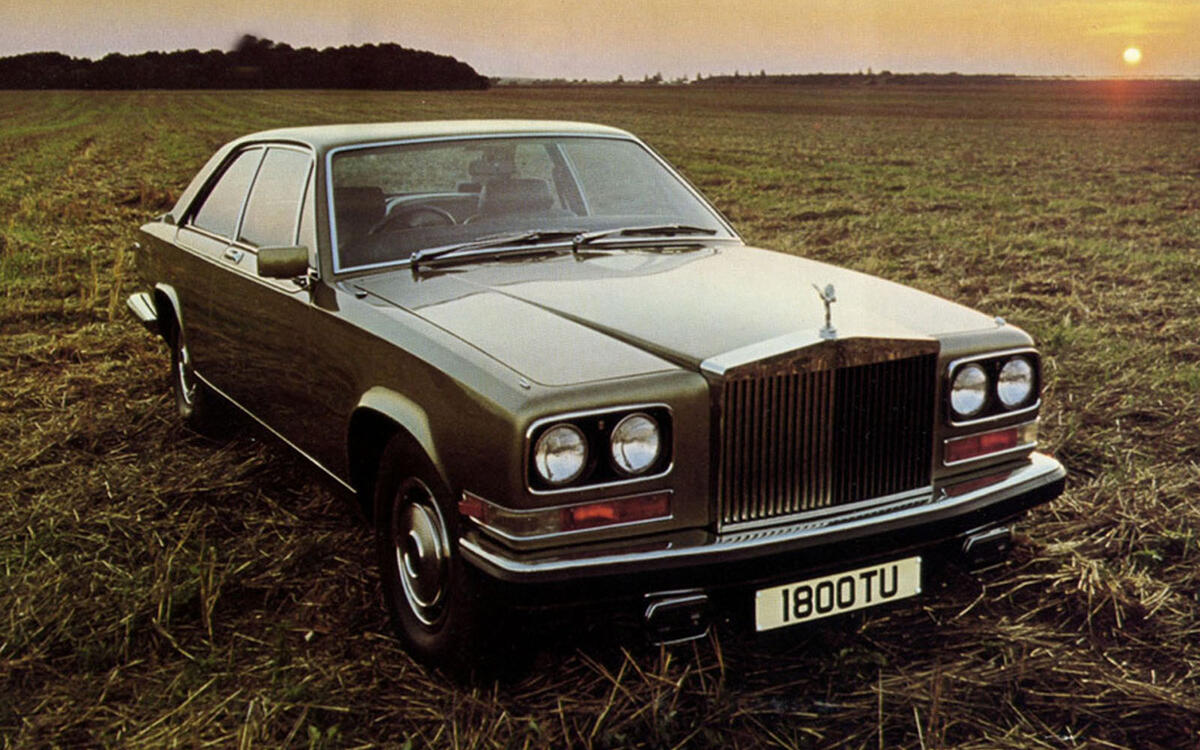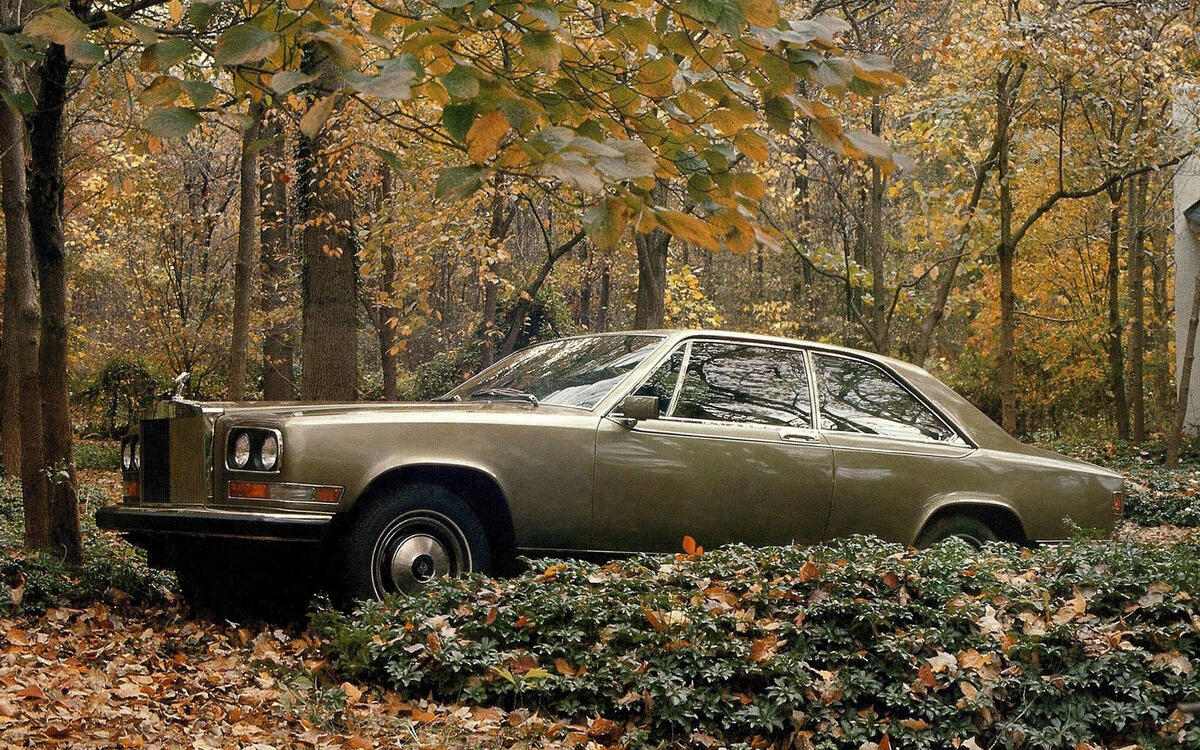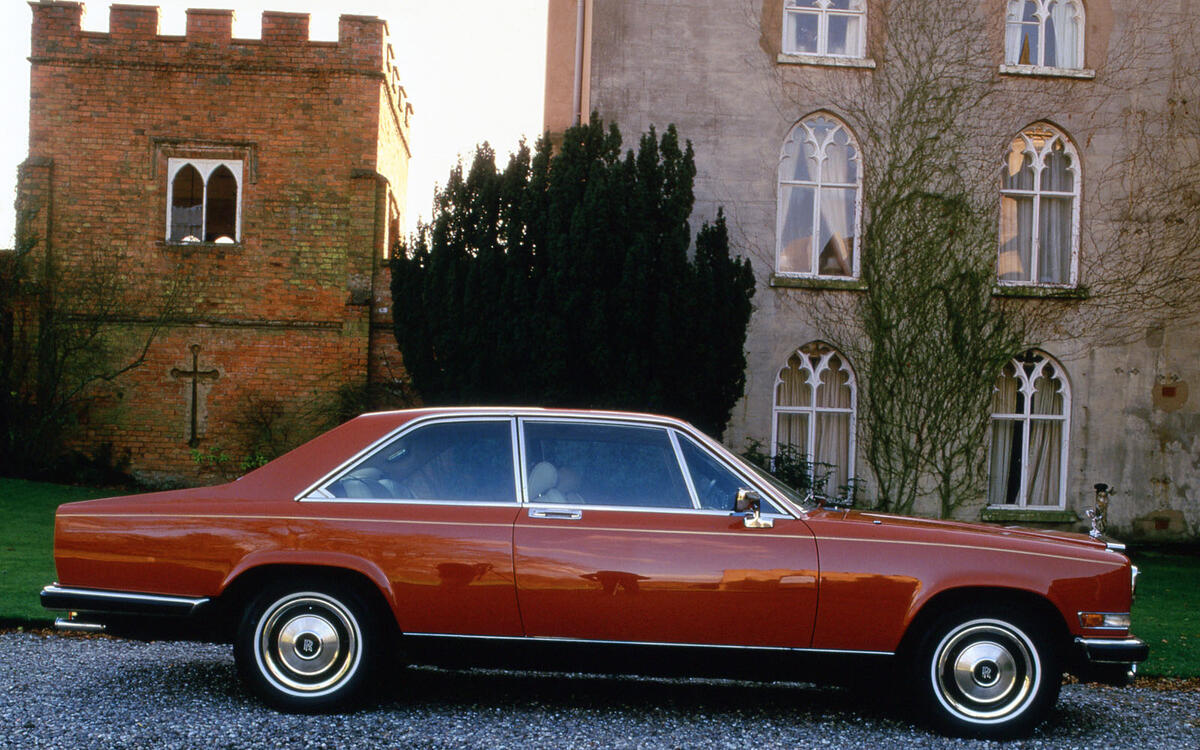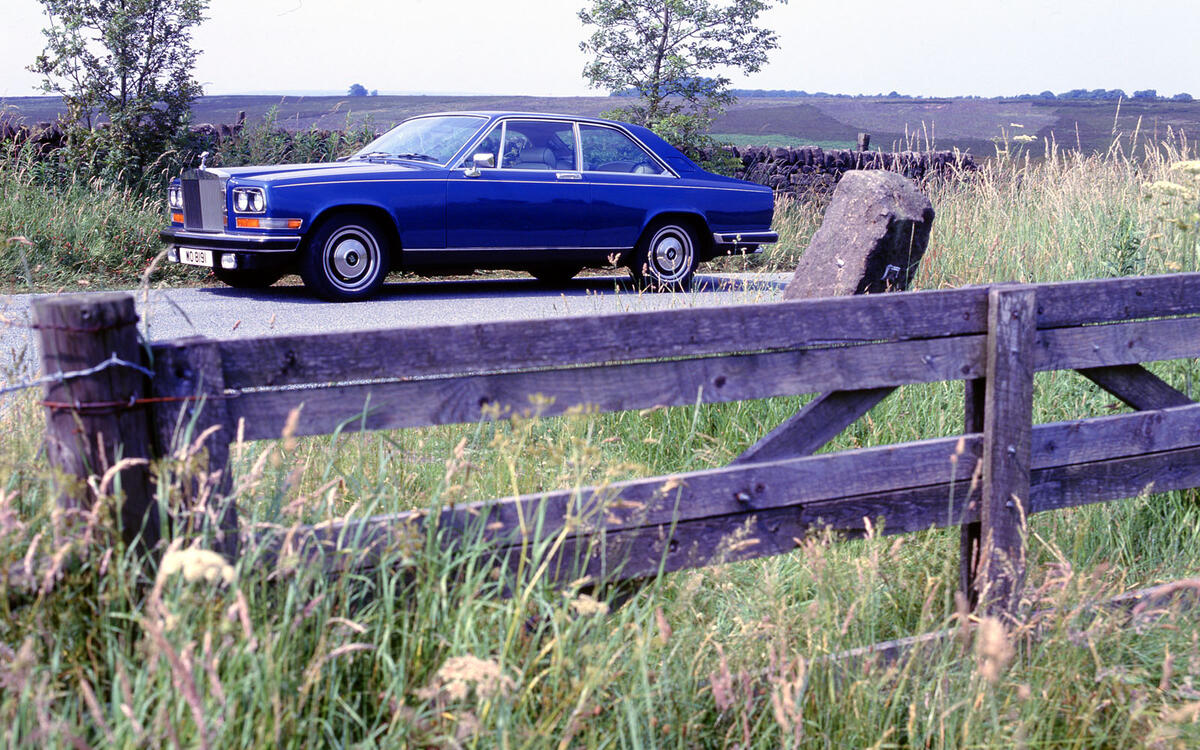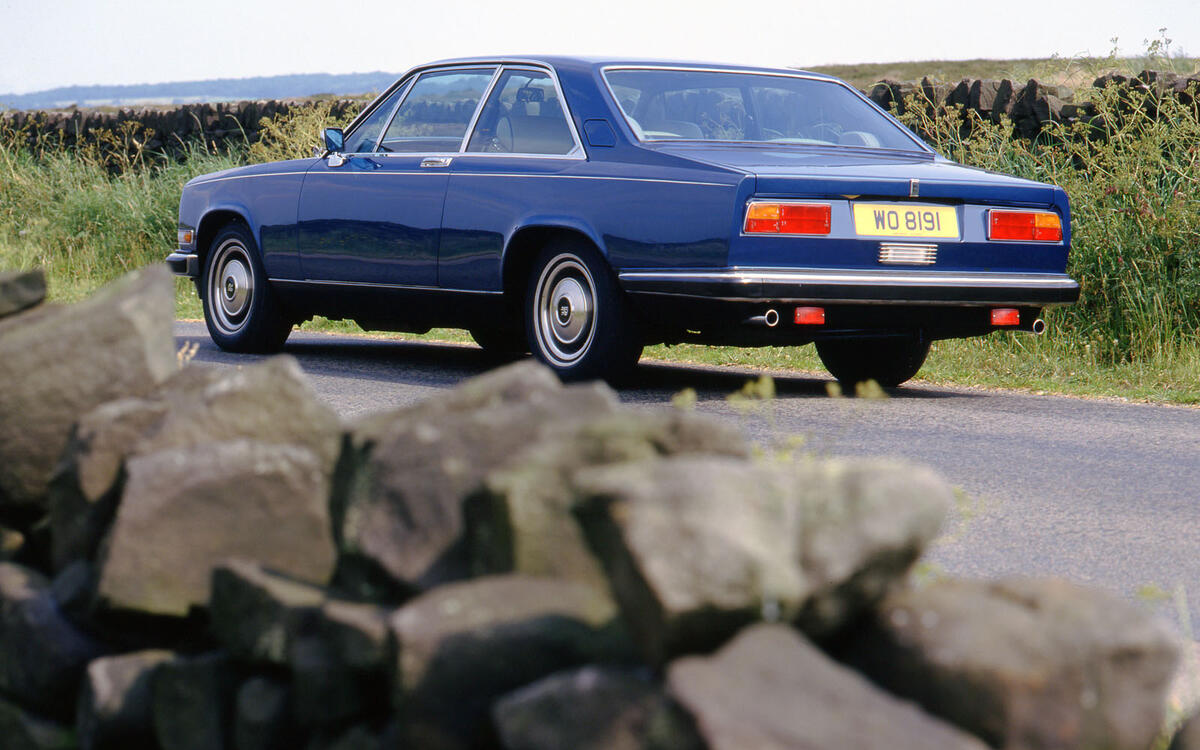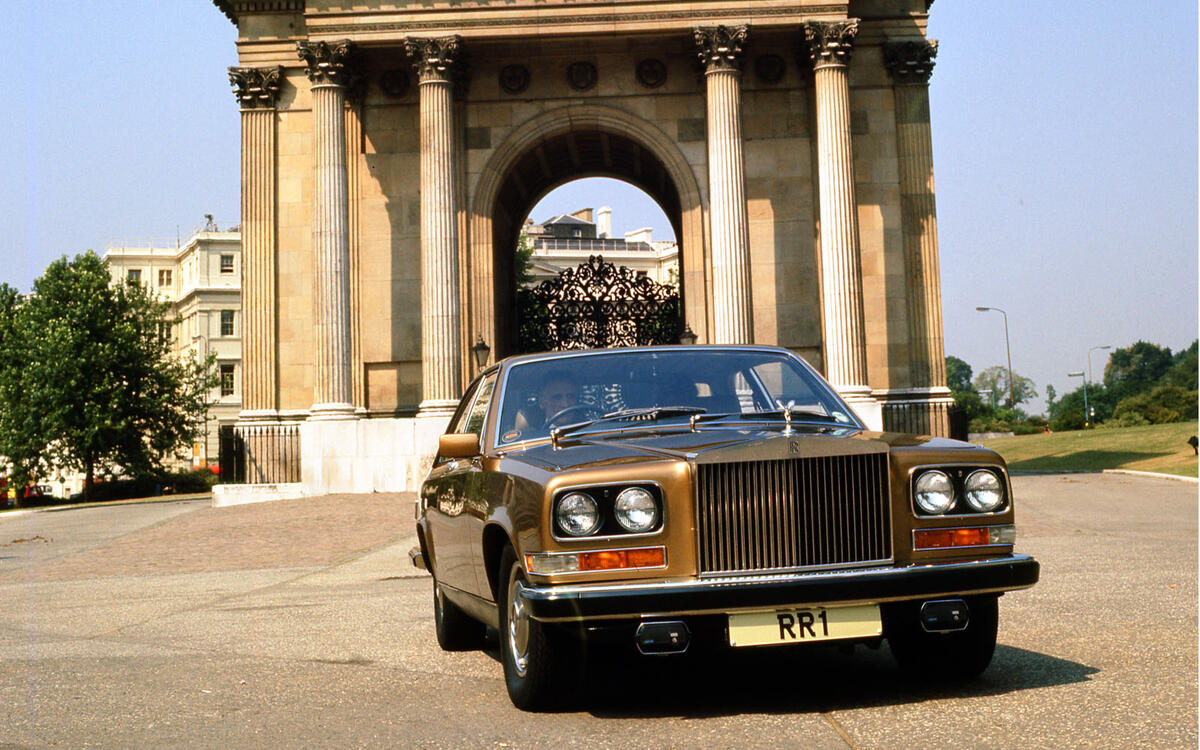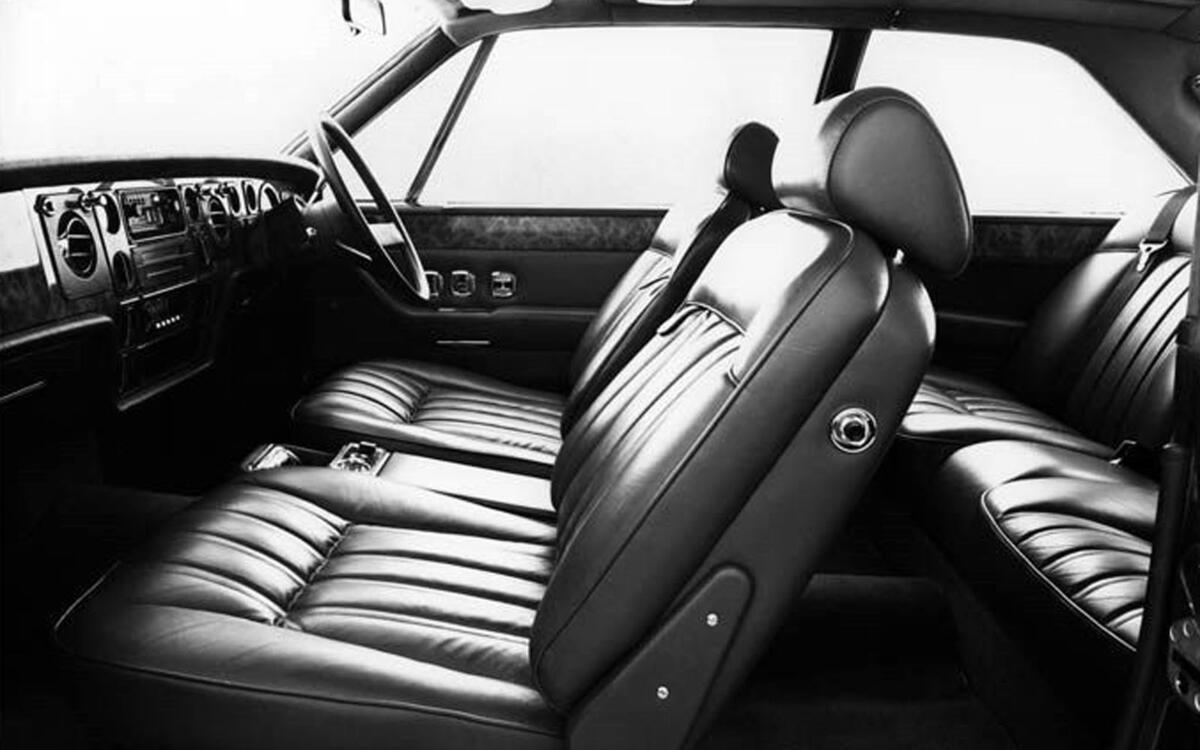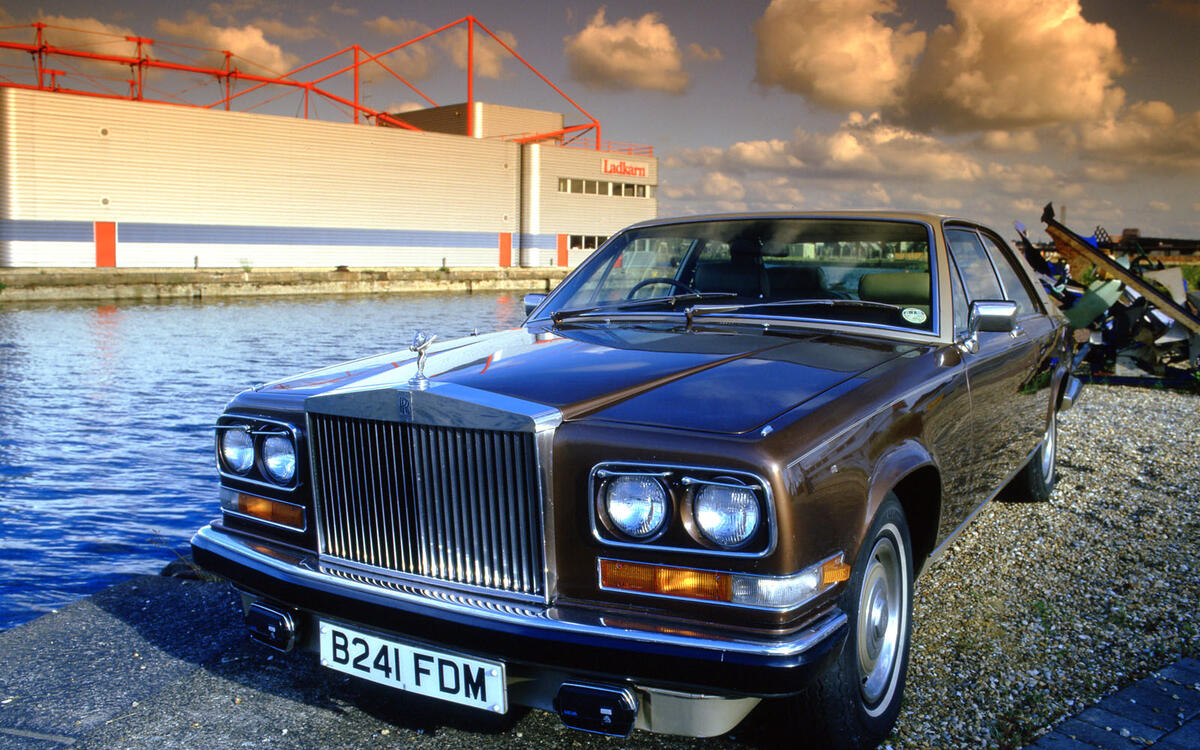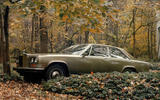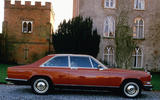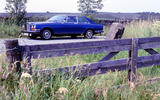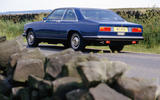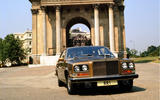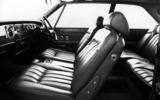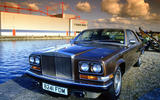 Slide of
Slide of
Imagine being able to buy a Bugatti Chiron in 40 years’ time for £3.2 million. Or a McLaren F1 for £960,000. These cars are or have been the most expensive models on the planet, but it’s hard to see their values tumbling - in real terms - to just 60% more than their original list price by 2058, unless we’re banned from driving petrol-powered cars altogether.
 Slide of
Slide of
Big spender
But this has been the fate of the most expensive car back in 1975, which was… the Rolls-Royce Camargue. Back then it cost around £30,000 – equivalent to £240,000 today (US$336,000). It's worth remembering that a fancy house in London's fashionable Notting Hill neighbourhood cost about the same amount at the time - and those houses today sell for north of £5 million (US$7 million) today.
Today you can find this sort-of £5 million car on sale for little more £50,000, and for roughly $80,000 in the US.
 Slide of
Slide of
Rare Roller
Though only with a struggle – just 531 were produced during an 11-year run that ended in 1986 - and well over half went outside the UK. But there are bargains of sorts out there, and you get a lot of Rolls for your money. A lot of rather ill-proportioned Rolls-Royce, in fact.
 Slide of
Slide of
A Rolls first
If a Camargue comes at you from the front you’ll find it impossible to miss the rippling glint of its overblown, Las Vegas-style Greek temple of a grille. Never mind that it was raked rearwards by seven degrees (the first time a Rolls grille was allowed to rise at any angle other than perpendicular) for a supposedly more sporting look – this grille bordered on parody. But look at this Roller longer and you’ll find yourself troubled by something still more unfortunate.
 Slide of
Slide of
Too big for its boots
Which is the startling discovery it appears to be wider at gutter height than it does at the sills – not a good look for a car that is supposed to appear svelte and sporting. The ungainliness is only rammed home by a rear track that’s too narrow – the bodywork almost drowns the rear wheels – and a stance that has it sagging as if its boot was stuff-full of Bollinger. The Camargue’s rarity surely had as much to do with styling as it did that high price.
 Slide of
Slide of
Missed opportunity
Almost as surprising as the shock of seeing one – and I don’t reckon I’ve enjoyed more than half-a-dozen sightings in 32 years - is discovering that the Camargue was the work of Pininfarina, coachbuilders renowned for their good taste, which had recently been demonstrated by the 1971 Fiat 130 Coupe whose basic outline the Camargue shared. The Fiat is regarded as one of the most elegantly subtle and tasteful coupes of the ‘70s, but the Camargue manages to look like a 130 that fell into the bling-ringed hands of the ‘Pimp My Ride’ crew.
 Slide of
Slide of
Trouble in the family
Its problems didn’t stop there either. Like so many coupes, it failed to provide much advantage over the saloon it was based on, the Silver Shadow not only being cheaper but appearing stylish and in-proportion. Exquisitely so compared to the Camargue, whose chief advantage was a bi-level air conditioning system that took eight years to develop and cost the price of a small car.
 Slide of
Slide of
One to watch?
It could simultaneously blow chilled air to your face and warm gusts at your feet – commonplace today, but a first for car air conditioners back then – though this was hardly a reason to buy the world’s most expensive wheels. Nor was the fact that it was the first Rolls-Royce designed to metric measurements. Truth is, the Camargue was your ultimate, high-end lemon.
But that makes it an intriguing curio today. Now there’s no way I’d buy one even if I had £50k to blow, but it’s a fascinating and near-forgot Rolls-Royce footnote. And orphans like this always turn fascinating with age
The rare Rolls-Royce that only a mother could love
Advertisement


